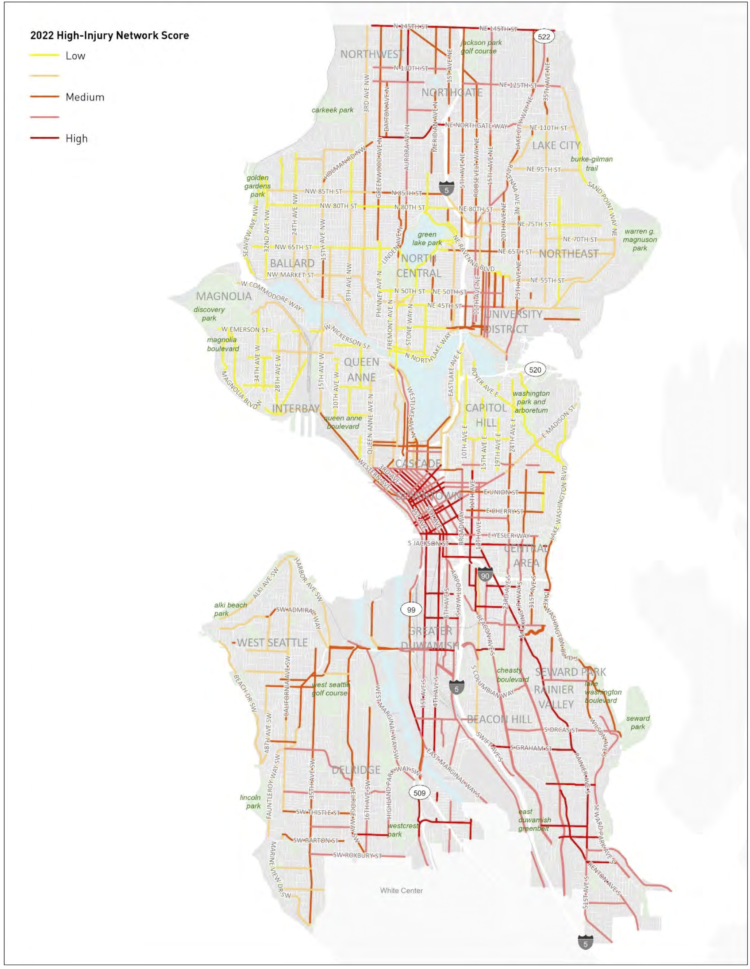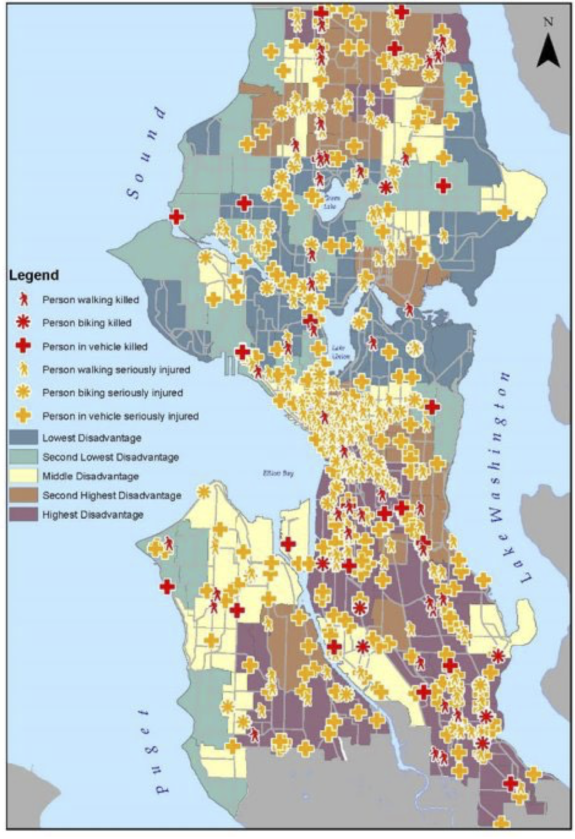A transportation funding ballot measure that inspires
Over the next 8 years, Seattle will improve safety on every high-injury street in the city.
That's the kind statement I would love to see Seattle make when selling the transportation funding measure it will send to voters later this year. This is a high-turnout Presidential election year, and higher turnout should make it easier to pass a bold and inspiring package of forward-thinking and innovative transportation goals.
The next transportation funding measure is Seattle's final chance to reach Vision Zero by 2030, the goal the city set when the program launched in 2015. Since 2015, the Vision Zero has conducted a series of very successful one-off projects here and there, and it is now time to scale these efforts up to address all our most dangerous streets.
We know safety is a top transportation priority for Seattle voters, and we also have a map of high-injury streets throughout the city. Put those together to create an ambitious but achievable goal that may have no precedent among large U.S. cities. Seattle can and should be a leader that inspires other cities by showing them what's possible. With traffic deaths and injuries rising across the nation, Seattle can be the place that turns that trend on its head. We can take smart action by bringing SDOT's modernized understanding of safe and efficient street design to all our most dangerous roadways, reversing historical inequities that place the most dangerous roads near lower income communities and communities of color. We can show that this work can be done at scale while keeping people and goods moving efficiently.
 Map of Seattle's high injury network from Mayor Bruce Harrell's proposed Seattle Transportation Plan. The scores" shown in this map include a race and social equity weighting that gives a higher score in low income communities and communities of color.
Map of Seattle's high injury network from Mayor Bruce Harrell's proposed Seattle Transportation Plan. The scores" shown in this map include a race and social equity weighting that gives a higher score in low income communities and communities of color.  Map of deaths and serious injuries 2019-2021, from SDOT's 2023 Vision Zero Top-to-Bottom Review.
Map of deaths and serious injuries 2019-2021, from SDOT's 2023 Vision Zero Top-to-Bottom Review.I do not know exactly what this would cost, but Seattle's Vision Zero team has had a remarkable success rate at improving safety on streets as busy as Rainier Ave S for a relatively low cost. Given that we are talking about saving people's lives and preventing lifelong injuries, the return on these investments could not possibly be higher. The Seattle Transportation Plan already calls for safety to the top priority in all roadway investments. So any high-injury street that is slated for significant work of any kind in the next 8 years or so should already be included. All the city would need to do is bundle the high-injury streets not slated for a project in the next 8 years into a separate Vision Zero intervention project list. Complete that list, and the city will have fulfilled its promise to voters.
Of course, this work is always so much harder than it appears at first. But this is a challenge worth embracing. Even if we aim for the moon on this and fall short, we still will have saved a lot of lives and prevented a lot of tragedies. And while the total number of deaths and injuries is daunting, the maps show that a high percentage are confined to a handful of the most dangerous streets.
The Move Seattle Levy Oversight Committee recently sent a letter to the mayor and city council recommending a bold levy," and that future levy [Vision Zero] projects should target areas with highest need," Ryan Packer at the Urbanist reported. At the same time, a group of organizations-including Disability Right Washington, Seattle Neighborhood Greenways, Cascade Bicycle Club, Puget Sound Sage and more-recently recommended a $3 billion levy that would include about $595 million for new street safety improvements in addition to funding for maintenance and accessibility. Their plan specifically calls on the city to address the five most dangerous streets in the city-Aurora Ave N, MLK Jr Way S, 4th Ave S, Rainier Ave S and Lake City Way NE-which will likely also be the most expensive to fix.
So there are a lot of smart people who are all circling around the same idea for the next levy: A major push for safety. I encourage SDOT, Mayor Harrell and the City Council to crunch the numbers to see what it will actually cost to make all of our city's most dangerous streets safer through a combination of high-budget remakes as well as a quicker and lower-budget Vision Zero interventions. Because if the city can go to voters with a bold plan for preventing more deaths and injuries on our streets, Seattle voters will eagerly vote YES.